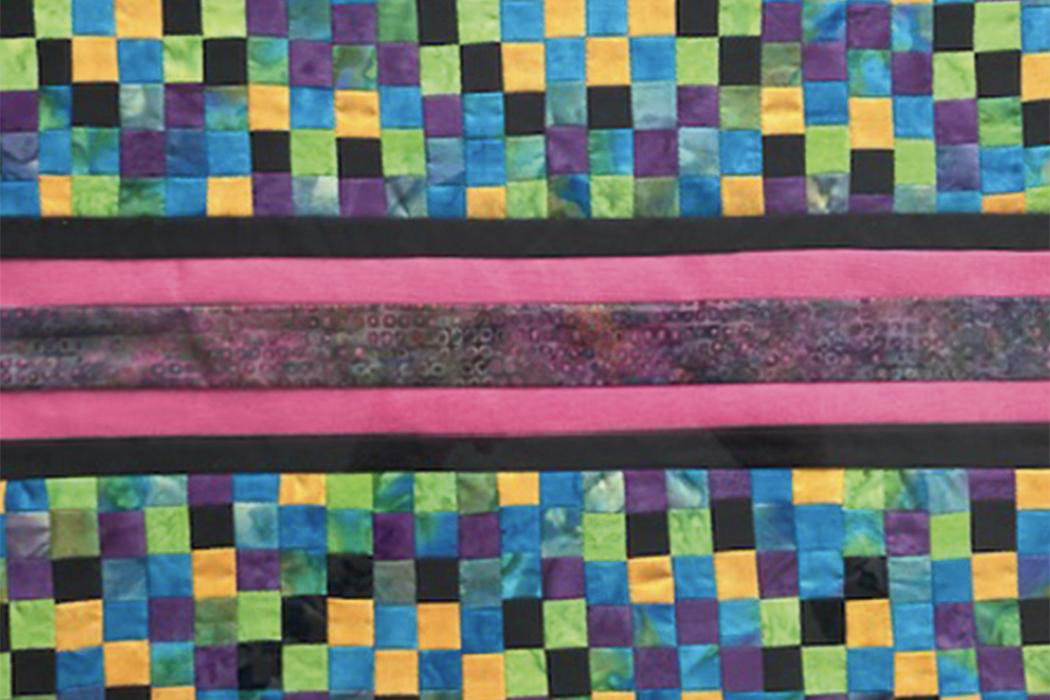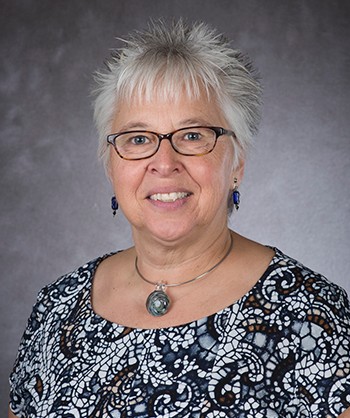
Cinquino will display a number of her favorite quilts at her solo exhibition in the Social Work Library. Courtesy photo.
Liz Cinquino has been making quilts for more than 20 years, sewing colorful pieces of cotton fabric together in abstract designs that resemble checkerboards, bow ties, winding rivers, and more.
She’s exhibited her work in coffee shops, churches, and other venues dozens of times, but she’s never displayed her creations in a solo show.
That is, until now.
Cinquino, director of student services and advising for the Boston College School of Social Work, will showcase her favorite pieces in the BCSSW Library from March 11 to May 31. An opening reception for the exhibit, titled Checkered Past, will take place March 11 from 3-5 p.m.
“It brings me a lot of joy to make these pieces,” says Cinquino, who works in her home studio in Boston’s Jamaica Plain neighborhood. “I hope people who see them feel a sense of happiness and a sense of warmth.”

Cinquino has been making quilts for more than 20 years. Courtesy photo.
Cinquino estimates that she’s made more than 50 quilts since the late-90s. She uses Batik fabrics, many of which are hand-dyed by craftspeople in Indonesia, and often adorns her art with bric-a-brac like feathers, beads, and buttons.
Cinquino usually frames her quilts as though they were paintings or photographs and hangs them on walls, both in her home and her office. On other occasions, she gives her quilts away as gifts for birthdays or baby showers.
She always names her pieces, labeling them with words or phrases that aptly describe the work. Bows on Parade, for example, depicts three bow ties dancing across a trio of frames. “I like naming them, because I think that’s part of the fun of it,” she says. “I’m not one of these people who has ‘Unnamed Piece No. 1.’”
Cinquino traces her interest in fabric art back to her maternal grandmother and great aunt, whom she describes as “amazing seamstresses.” She says they inspired her to see fabric as more than a utilitarian material.
“They were my inspiration to realize that you could use fabric to do more than make clothes,” says Cinquino, who joins pieces of her work with her grandmother’s 100-year-old sewing machine. “You could actually be kind of artful with it.”

Cinquino often adorns her quilts with bric-a-brac like feathers, beads, and buttons. Courtesy photo.
Her quiltmaking began with a bedspread, a project that took two years to finish. But she quickly “realized that was way too much time” and set her sights on smaller projects that she could complete in a matter of weeks.
Like a novelist who begins a book with a theme in mind but no clear ending, Cinquino often begins a quilt with colors in mind but no clear design. Other times, she’ll see a geometrical pattern out in the world that sparks her creativity. “I’ll take a picture and I’ll say, ‘Oh, maybe that’s something I could make into a quilt.’”
Cinquino wants her quilts to look homemade. She doesn’t mind if every checker is perfectly square, if every circle is perfectly round. Her advice to new fabric artists? Eschew perfection for authenticity.
“You want people to know that you made this with your hands and a sewing machine,” she says. “That it’s not something that was made in a factory.”
Cinquino is working to apply her artistic acumen to her job at BCSSW. She says expressing her creativity through her work, like she does through her art, could benefit students and colleagues alike.
“I have to remember that I have a creative side and that I can bring it into this program,” says Cinquino. “And, of course, actually having a show in the School is the ultimate way of combining my art with my work.”

